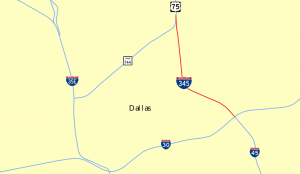
Photo Credit: Wikipedia/25or6to4 CC BY-SA 2.5
First a question for you. A reader just took a job as planning director for a small city and is looking for good blogs on urbanism topics focused on cities of less than 50,000 people. Does anyone have any suggestions? Please send or post, because someone could use our help.
In the 1960s and 70s, cities and states plowed interstates through central city areas until the freeway revolt movement more or less put an end to it. I’m not as down on urban freeways as some, but clearly we went overboard.
In recent years a new trend has emerged, that of the downtown freeway teardown. Business Insider recently put out a nice compendium of before and after shots. The transformation is dramatic, particularly in places like San Francisco.
In my recent study on infrastructure projects we should actually build, one of my selections was the I-345 teardown proposal in Dallas. I noted:
Downtown Dallas, about 1.5 square miles, is circumscribed by a five-mile freeway loop that consumes large amounts of valuable real estate and makes pedestrian access to downtown unpleasant. Though primarily a commercial area, the downtown has seen substantial residential growth. Areas immediately beyond I-345, the northeast section of the freeway loop, have also experienced substantial residential growth and revitalization. The demolition of I-345 would connect these two growing neighborhoods and also free up 245 acres of downtown land for high-density, taxpaying development. The Texas Department of Transportation (TxDOT) estimated an increased land value of $2.5 billion from removal, a minimum of $1 billion greater than any other studied scenario.
This illustrates part of the superfecta that you can get with freeway tear downs:
-
- Save money today. Tearing down a freeway is generally cheaper than reconstructing it at end of life.
- Save money tomorrow. Removing a freeway eliminates future maintenance spending on it. Even if replaced by a surface boulevard, those are cheaper to maintain.
- Reconnect neighborhoods. Removal eliminates a barrier separating neighborhoods.
- Increase property values and tax revenue. A removed downtown freeway can raise the value of adjacent land and put more land back onto the tax rolls as development.
That’s a win-win-win-win. It’s not everyday that you can create a lot of new value with infrastructure changes while saving money at the same time. If you can find a way to make it work given the transportation demand (which plenty of places already have), this is an action that’s more than worth exploring.
Read more in D magazine.
from Aaron M. Renn
http://www.urbanophile.com/2018/05/14/i-345-and-the-freeway-teardown-phenomenon/
No comments:
Post a Comment